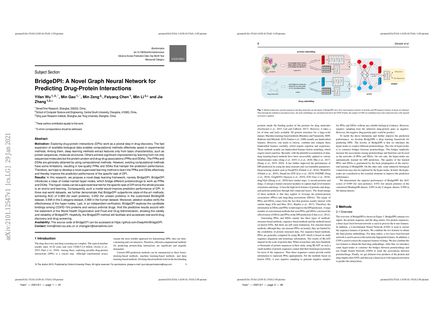BridgeDPI: A Novel Graph Neural Network for Predicting Drug-Protein Interactions
Motivation: Exploring drug-protein interactions (DPIs) work as a pivotal step in drug discovery. The fast expansion of available biological data enables computational methods effectively assist in experimental methods. Among them, deep learning methods extract features only from basic characteristics, such as protein sequences, molecule structures. Others achieve significant improvement by learning from not only sequences/molecules but the protein-protein and drug-drug associations (PPAs and DDAs). The PPAs and DDAs are generally obtained by using computational methods. However, existing computational methods have some limitations, resulting in low-quality PPAs and DDAs that hamper the prediction performance. Therefore, we hope to develop a novel supervised learning method to learn the PPAs and DDAs effectively and thereby improve the prediction performance of the specific task of DPI. Results: In this research, we propose a novel deep learning framework, namely BridgeDPI. BridgeDPI introduces a class of nodes named hyper-nodes, which bridge different proteins/drugs to work as PPAs and DDAs. The hyper-nodes can be supervised learned for the specific task of DPI since the whole process is an end-to-end learning. Consequently, such a model would improve prediction performance of DPI. In three real-world datasets, we further demonstrate that BridgeDPI outperforms state-of-the-art methods. Moreover, ablation studies verify the effectiveness of the hyper-nodes. Last, in an independent verification, BridgeDPI explores the candidate bindings among COVID-19's proteins and various antiviral drugs. And the predictive results accord with the statement of the World Health Organization and Food and Drug Administration, showing the validity and reliability of BridgeDPI.
PDF Abstract

